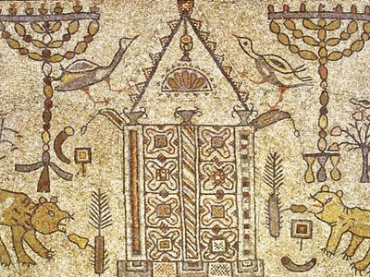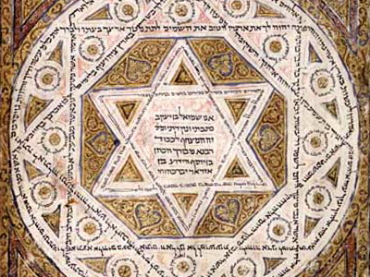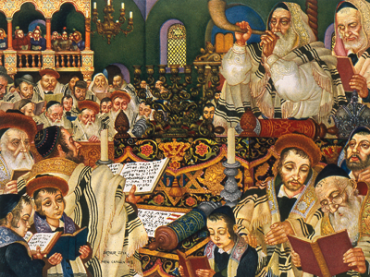Jewish Studies
Jewish Studies is an interdisciplinary field studying Jews and Judaism in all of their geographical, cultural, social, economic, historical, political, religious, and linguistic contexts, from Late Antiquity through the modern period. The Judaism in Context series features monographs and edited collections that traverse the wide landscape of Jewish Studies.
Hebrew Studies Miscellany
Series: Analecta Gorgiana 89
ISBN: 978-1-60724-008-2
In this set of articles originally published together in his booklet Orientalia, Lagarde addresses several issues concerning Hebrew studies. The first article, Explanation of Hebrew Words, addresses the use of twelve significant lexemes. Added to this essay is a contribution of Lagarde to the Hebrew reflected in Ephraim the Syrian’s work on Genesis, extant in Armenian. Select passages from Genesis 2 through 38 are given consideration in the light of philological investigation. Together these pieces represent a useful collection of insights into the Hebrew language both through classic philology and through the ecclesiastical interpretation of a scholar in the tradition of Syriac Christianity.
$45.00
Interpretation, Religion and Culture in Midrash and Beyond
Proceedings of the 2006 and 2007 SBL Midrash Sessions
Edited by Lieve M. Teugels & Rivka Ulmer
Series: Judaism in Context 6
ISBN: 978-1-59333-619-6
The third issue of Proceedings of the Midrash session at the SBL Annual meeting published in this series. This volume contains papers on religion in midrash (2006) and modes of biblical interpretation in rabbinic, Syriac and Islamic traditions (2007).
$161.00
Purim
Address Delivered at the Annual Meeting of the Society of Biblical Literature and Exegesis
By Paul Haupt
Series: Analecta Gorgiana 107
ISBN: 978-1-60724-033-4
Approaching the question of Purim historically, Haupt notes that the book of Esther was composed during the reign of Judas Maccabeus, and he correlates the festival to the Babylonian New Year. He discusses the origin of the title “purim” from various languages, ultimately deciding on the Old Persian explanation. Moving forward, Haupt brings the festival into the more modern period, showing how the ancient tradition continues to exist. A useful resource for anyone interested in turn-of-the-century thought on the origins of an enigmatic biblical festival, this contribution is both readable to the layperson and scholarly as well.
$44.00
Jews in Iraq after the Muslim Conquest
Series: Analecta Gorgiana 110
ISBN: 978-1-59333-601-1
As the oldest organized religion in Sassanian Iraq, Judaism serves as a kind of model for other religious organizations in the region. After considering the growth of Judaism in Iraq during the Sassanian period, Morony notes the connections between the Jewish and Aramaean populations as well as the intermixed ethnic communities in which Jews played a part. Social, administrative, and religious issues are all considered. Messianic expectations as they continued to develop in the Jewish community in diaspora round out this discussion of Judaism as a fully developed religion in Iraq under Islamic rule.
$36.00
Perspectives on Hebrew Scriptures IV
Comprising the Contents of Journal of Hebrew Scriptures, Vol. 7
Edited by Ehud Ben Zvi
ISBN: 978-1-59333-920-3
This volume incorporates all the articles and reviews published in Volume 7 (2007) of the Journal of Hebrew Scriptures.
$242.00
The Women of Israel by Grace Aguilar
Two Volumes in One with a New Introduction and Commentary
Series: Judaism in Context 15
ISBN: 978-1-61719-626-3
For almost a century after it was first published in 1845 Grace Aguilar's Women of Israel was presented as a high school graduation gift and even as a Christmas present to employees. More than 150 years before the current proliferation of books on women in biblical narrative and biblical law, Aguilar offered brilliant and innovative interpretations of abiding value. She took for granted that her readers could read Hebrew and that they, like herself, knew the King James Bible from memory. The extensive introduction and notes will make this new edition once again accessible to laypersons, students, and scholars.
$346.00
The Archaeology of Cult in Middle Bronze Age Canaan
The Sacred Area at Tel Haror, Israel
By Jill Katz
Series: Gorgias Studies in the Ancient Near East 3
ISBN: 978-1-59333-791-9
What was Canaanite religion like during the Middle Bronze Age, at the time of the biblical patriarchs? This volume presents a theoretical model for identifying ritual behavior in the archaeological record, providing a test case using the rich material culture and structures that have been unearthed at the biblical city of Gerar (Tel Haror, Israel).
$149.00
“I Sat Alone”
Jeremiah Among the Prophets
ISBN: 978-1-59333-854-1
The prophet Jeremiah is among the most complex and intriguing characters in the Bible. This study of the prophet focuses on the major biographical episodes in the prophet’s book and their interpretation. After setting the historical background of the prophet, Avioz then explores Jeremiah’s prophetic call. All major events of his life are parsed for a deeper insight into the prophet's life. Those with whom Jeremiah interacts, the kings of Judah and the false prophets, are assessed in contrast with the prophet. Avioz concludes his study with a consideration of Jeremiah’s legacy down to the present day.
$84.00
Further Biblical Hebrew (hardback)
Explanations and Exercises
Series: Gorgias Handbooks 11
ISBN: 978-1-59333-948-7
This coursebook is designed for students who have completed at least one year of college study in Biblical Hebrew. It helps students make the transition from the basic grammar books to use of the comprehensive reference grammars and to more advanced analysis of Biblical Hebrew. Constant reference is made to recent works of grammar, and also to the grammatical comments of the medieval Jewish exegetes. A central theme is that medieval and modern Biblical Hebrew scholars have reached essentially similar conclusions, even if the medievals lacked modern terminology
$173.00
The Concept of Intention in the Old Testament, Philo of Alexandria and the Early Rabbinic Literature
A study in human intentionality in the area of criminal, cultic and religious and ethical law.
ISBN: 978-1-59333-653-0
Does God take into account only the physical act, or does He also consider intention? Does inward motivation truly matter in the areas of criminal or cultic law? Were there differences between the biblical, hellenistic and rabbinic views on intention? This book explores what the Old Testament, Philo, and the early Rabbis thought about human intentionality in a legal context.
$230.00
First Came Marriage
The Rabbinic Appropriation of Early Jewish Wedding Ritual
By Susan Marks
Series: Judaism in Context 13
ISBN: 978-1-59333-585-4
Ritual and historical perspectives each provide only a partial view of early Jewish weddings. Combining these approaches allows for a new look at practices rejected or highlighted by early rabbis and their successors, and First Came Marriage: The Rabbinic Appropriation of Early Jewish Wedding Ritual investigates the process by which early Jews married and the various moves they used to minimize, elaborate or codify these practices.
$150.00
The Book of Lamentations and the Social World of Judah in the Neo-Babylonian Era
Series: Biblical Intersections 6
ISBN: 978-1-60724-112-6
Using a form of social-historical criticism this book provides a counter-reading of Lamentations that elucidates the impact and aftermath of siege warfare on Judah's peasants. The rhetoric of Lamentations, ancient Near Eastern writings, and archaeological evidence are considered, along with social models from other agrarian societies. Together these shed light on the changing social dynamics, religious customs, and political and economic structures of rural and urban Judah in the sixth century BCE. This study brings to life voices long silent, and suggests that Judah's peasants played a significant role in the survival of peasant and city-dweller alike, when Jerusalem fell.
$152.00
I Deal Death and Give Life
Biblical Perspectives on Death
By Shaul Bar
ISBN: 978-1-60724-328-1
Is death the end of the human journey, or is there continuity after death? What happens to body and soul after death? Were Israelites worshiping the dead? What is the source of mourning practices? This book explores this multifaceted topic as related in the Bible.
$166.00
The Early History of Syria and Palestine
Series: Kiraz Classic Archaeological Reprints 8
ISBN: 978-1-60724-244-4
Although written before the modern discoveries that define Ancient Near Eastern studies today, Paton’s historic foray into the history of Syria and Palestine served to start a continuing discussion that remains active today. Covering the Babylonian, Aramaean, Egyptian, Hittite, and Assyrian empires, Paton demonstrates what was known of the history of the region with the limited resources of nineteenth-century explorations.
$189.00
The Creation-Story of Genesis I
Sumerian Theogony and Cosmogony
By Hugo Radau
Series: Analecta Gorgiana 174
ISBN: 978-1-60724-245-1
In this brief study of the creation account in Genesis 1, Radau makes full use of the Sumerian materials available in his day. Summarizing the sea monster versus deity scenario known from the Enuma Elish’s account of Marduk against Tiamat, he shows how Yahweh fits this role in Genesis 1. Going into linguistic detail of the Hebrew and Sumerian sources, he draws a set of correlations between the two.
$47.00
Die Höllenfahrt der Istar, ein altbabylonisches Epos
Nebst Proben assyrischer Lyrik
Series: Analecta Gorgiana 175
ISBN: 978-1-60724-246-8
This volume contains Schrader’s study of the underworld journey of Ishtar. He examines this Old Babylonian epic together with samples from Assyrian poems. The text is given, along with a translation, commentary and glossary.
$68.00
Die Babylonisch-Assyrischen Vorstellungen vom Leben nach dem Tode
Series: Analecta Gorgiana 176
ISBN: 978-1-60724-247-5
In this brief study, Jeremias examines the representations of life after death in the Babylonian and Assyrian sources. The descent of Ishtar, basic concepts of the grave, descriptions of the afterlife and the realm of the blessed are all examined. The possibility of return from death and the biblical outlook on the subject are also part of the exploration.
$61.00
Die Hellenisierung des Semitischen Monotheismus
Series: Analecta Gorgiana 179
ISBN: 978-1-60724-272-7
Deissmann was a scholar well known for his work with the Greek of the New Testament. In this little volume he considers the Hellenization of Semitic monotheism. Primarily concerned with the changes after Alexander’s conquest, the book is a brief exploration of Greek religion in the aftermath of conquest. Semitic monotheism was, according to Deissmann, a new concept for the Greek world. Hellenistic outlooks had long been influenced by classical viewpoints. Into this cultural milieu the Judaic concept of monotheism made immediate inroads. This influence is explored primarily in linguistic form, including considerations of the Septuagint. Both Hellenists and Semitic scholars will find material of interest here. Observations made by Deissmann influenced later thought in this field. Stretching across disciplines, this study will interest cultural historians as well. Share the sense of discovery with this useful booklet.
$35.00
Le Logos d'apres Philon d'Alexandrie
By Jean Réville
Series: Analecta Gorgiana 184
ISBN: 978-1-60724-280-2
In this theological exposition on the concept of the Logos in the writings of Philo of Alexandria, Réville offers a probing piece of research. Beginning with the historical milieu of Philo’s time, he moves on to his main focus, playing out what the doctrine of the Logos is. Theologians who wish to know turn-of-the-century ideas concerning the Logos will find this irresistible reading.
$53.00
The Three Great Prophets of the World
Moses, Jesus and Muhammad
By Lord Headley
Series: Analecta Gorgiana 190
ISBN: 978-1-60724-286-4
Written by a well-known convert to Islam, this little study traces the connections between the major prophets of each of the monotheistic faiths. Moses, Jesus, and Muhammad. He discusses the moral influences of these founders on their followers and the impact they had on their world. Headley next considers the way that these founders died or left the world and also what they had taught about the next world. Special attention is given, naturally, to the advent of Islam and what happened after the founding of the faith. Headley ends with a brief sketch of the life of Muhammad. A compact study written from the Islamic point of view, this book will be of interest to anyone concerned with the relations between the three monotheistic religions.
$57.00
Die Metrischen Stücke des Buches Jeremia
Series: Analecta Gorgiana 191
ISBN: 978-1-60724-287-1
This brief study entails a reconstruction of the metrical pieces of the book of the prophet Jeremiah. Laid out in poetic stanzas, various sections of this noteworthy prophetic book are presented in a form intended to facilitate analysis. Segments of several chapters are included, scanned according to the analytical parameters of Cornill. Noting that Jeremiah differs from the other major prophets Isaiah and Ezekiel in the reduced amount of poetry, Cornill nevertheless seeks a metrical pattern in the work of the prophet and lays it out in the original Hebrew. An informative foreword explains the method and layout choices used. Students of Hebrew metrics or ancient poetry in general will find these insights useful.
$43.00
Die Religion des Alten Testaments
Unter den Religionen des Vorderen Orients
By Karl Marti
Series: Analecta Gorgiana 192
ISBN: 978-1-60724-288-8
The aim of this booklet is to given an account of the nature of the religion of the Old Testament, especially those aspects that differentiate it from other ancient religions. Fitting with the emerging historical-critical Zeitgeist, Marti follows the usual division of Israelite religion into nomadic, peasant, prophetic, and legal religions. Various accoutrements and components of the religious life of antiquity are considered throughout this somewhat contrived course of Israel’s religious development. Written when Assyriology was just beginning to come into its own, Marti still finds the Graf-Wellhausen hypothesis a compelling explanation for the form of the biblical material.
$52.00
Beiträge zur Semitischen Metrik
Series: Analecta Gorgiana 193
ISBN: 978-1-60724-289-5
This brief contribution to the discussion of Semitic metrics was written by a renowned scholar of biblical languages. Concentrating on the partial acrostic poem in Nahum 1.2-2.3, Bickell addresses the metrics of the piece. Laying out the text in Hebrew and in transliteration, Bickell gives his own translation along with his metrical observations. For anyone interested in the poetic structures of Semitic languages, particularly biblical Hebrew, this booklet will provide considerable insight.
$33.00
Die Aramaismen im Alten Testament
By E. Kautzsch
Series: Analecta Gorgiana 194
ISBN: 978-1-60724-290-1
In this essential contribution to the study of Aramaisms in the Bible, noted linguist E. Kautzsch provides a thorough introduction to the subject. Since Aramaisms are not overly abundant in the Bible, Kautzsch has the space to dedicate a significant analysis. For linguists interested in how Aramaic influenced biblical Hebrew, as understood at the turn of the twentieth century, this little book will be of great value.
$58.00
Was hat Mohammed aus dem Judenthume Aufgenommen?
Series: Kiraz Theological Archive 40
ISBN: 978-1-60724-308-3
Undertaking the classic question of the relationship of Islam to Judaism, Geiger begins his treatment with the intertwined questions of what Islam wishes to do, is able to do, and is permitted to do with Judaism. Concepts and opinions such as faith beliefs, moral and legal regulations, and concepts of life are all considered as they moved from Judaism to Islam. A well-regarded early work in the field of comparative religions, Geiger’s work is not to be missed by anyone with an interest in Judaism and its relationship to Islam.
$167.00
Filter by
Filter by price
Filter by manufacturer




























